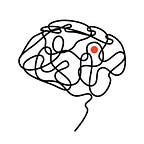Learning To Learn — Cultivating Your Craft
A Career Framework for a Stoic Engineering Journey
I have been blessed to have come across tremendous mentorship and great role models through my 20+ years as an engineer in both Silicon Valley (SF) and Silicon Alley (NYC). The following is a framework that I hope others can benefit from as I layout the details of my journey.
As an engineer by trade, this article focuses on a technical career but the framework itself is broadly applicable whether you aspire to be a chef, a writer or more.
Shapes of Experience
What can experience look like? A myriad of breadth and depth from deep expertise on a single discipline to broad knowledge that can help you bridge multi-disciplinary concepts together. Think about how interconnected the ideas from biology, chemistry and anatomy might help a medical professional cross reference and come to a diagnosis.
The Seed
The foundational mental model is a seed of potential. My personal experience has led me to believe there are 3 key traits that allows individuals to lean into adversity as a growth experience:
- Self Awareness — knowing that you don’t know everything
- Growth Mindset — always seeking growth, sometimes doing the same thing but more efficiently
- Grit — time on task and not giving up too soon in order to extract as much learning value out of an opportunity
A seed like this has high potential to sprout into a strong, balanced tree. In today’s competitive market, I hope to inspire continued learning and inspire a grove of polymathic technical experts.
The Sprout
In our careers, where we start can sometimes be a luck of the draw. Which job we start with and who we work with shapes how we self identify. “I’m a Back End Engineer!” or “I’m a QA Engineer”! The key point here is that while you start somewhere, there are other paths you can travel later in your journey.
The Trunk
As you progress in your career, what grows above the surface should be matched with what grows beneath the soil. When one has deep roots grounded in the fundamentals, they have the ability to draw upon the roots of principled knowledge to drive the growth activities aboveground.
In the technical field, those are the core Computer Science concepts. Data structures, algorithms, systems, networking, etc. With deep roots, the applied knowledge becomes more transferrable than shallow roots. If the experience is purely aboveground, a potential shift in the industry could uproot the entire tree and be toppled over.
The Branches
These branches and leaves (nodes) of knowledge sprout through hands-on experience closer to execution and delivery. As you explore each branch, you will take bets on whether that branch will bear fruit for only a few months or for. many decades. Emergent technologies have a limited shelf life for experience and the investment of energy may not last long.
Each branch sprouts twigs that grow into branches that sprout more twigs and so on. As you step progressively deeper into a discipline, you will gain deeper experience in that branch. For example, for someone that is working professionally in frontend, this journey could take you through the core set of technologies and involve exploring multiple frameworks in depth.
Path to Mastery
“When I watch, I see. When I do, I learn. When I teach, I understand.” This is a concept borrowed from Montessori Teachings, which promotes mixed age environments to optimize learning. There is a distinct progression of activities that drive you from novice to expert.
STEP 1 Awareness
Everyone you will ever meet knows something you don’t
— Bill Nye
Less experienced students observe more experienced students performing tasks. Opening up the possibility that something can be done that you ever thought was possible.
Step 2 Experience
Experience is simply the name we give our mistakes.
— Oscar Wilde
The student now tries the task and gains first hand experience. Going through the process of trials and failures provides the necessary environment to deeply engrain the skill.
Step 3 Mastery
If you can’t explain it simply, you don’t understand it well enough
— Albert Einstain
As the more experienced student, they can guide others along their journey. You distill the complexity of your journey and boil it down to simple concepts that allow you to promote individuals from Step 1 to Step 2 to Step 3.
Balancing Your Tree
Being a well rounded professional is not only about technical knowledge and experience. I encourage using the same techniques to explore other non-technical, adjacent skills to round out perspective so they can bridge effective communication and collaboration across a variety of team mates.
Final Thoughts
Everyone has something to teach. For those that are mentors, this strategy this is a powerful coaching framework to explore journeys for your mentees. Understanding their passion, their motivation and then setting up a learning journey to guide accelerate their careers.
Best of luck building in your own careers and inspiring your own grove.
